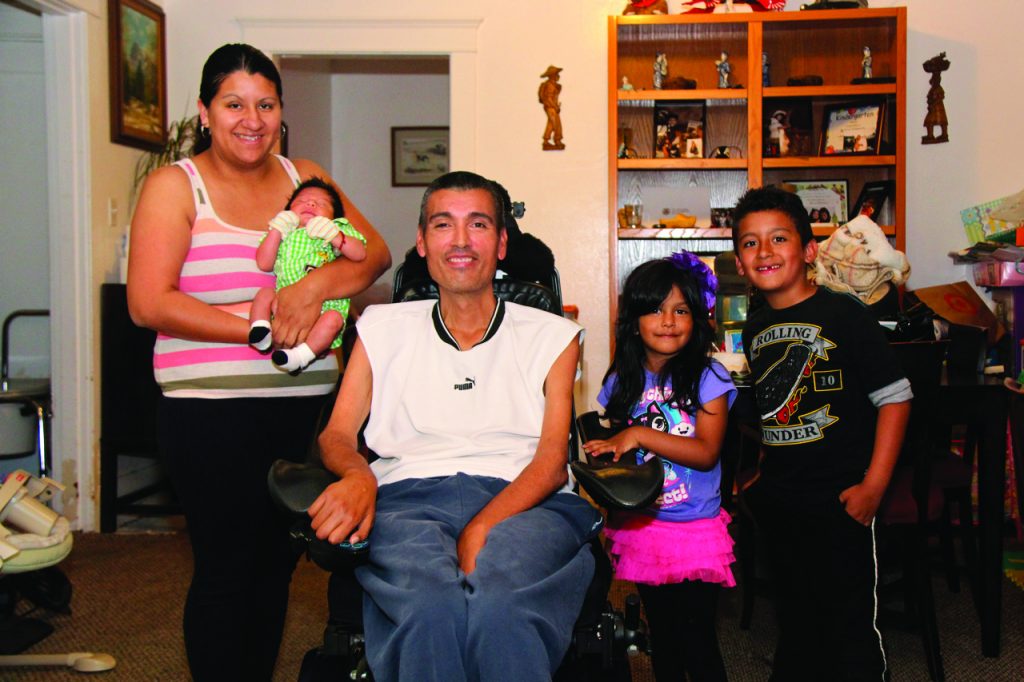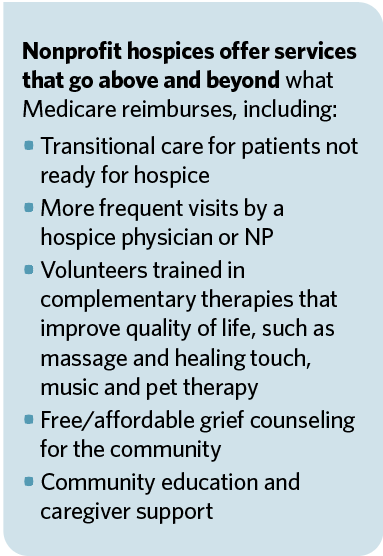Nonprofit care: Putting patients over profit
 When two San Mateo residents founded Mission Hospice in 1979 as the area’s first nonprofit hospice, hospice care in the US was still new. Across the nation, nonprofit, community-based care grew, supported by volunteers who wanted to offer compassionate comfort for those in the last phase of life.
When two San Mateo residents founded Mission Hospice in 1979 as the area’s first nonprofit hospice, hospice care in the US was still new. Across the nation, nonprofit, community-based care grew, supported by volunteers who wanted to offer compassionate comfort for those in the last phase of life.
As hospice care became more accepted and Medicare began covering it, the number of hospice agencies increased dramatically. In the last two decades, there has been a huge shift: growth has been almost entirely from for-profit operations. Many nonprofits have been purchased by for-profit owners. Others have simply closed. Today, only about a quarter of hospice agencies across the nation are nonprofit; in California, that number drops to 9%.
This has huge implications for patients, families, and their communities. Studies show a large gap in the level and kind of care provided by nonprofit hospices and for-profit companies, who have incentives to cut labor costs and select patients for whom care is less expensive.
 Because of their missions and community support, nonprofit hospices can prioritize patient needs rather than insurance reimbursements. Similarly, nonprofit hospices can care for patients who are uninsured, or whose insurance doesn’t cover the full cost of care.
Because of their missions and community support, nonprofit hospices can prioritize patient needs rather than insurance reimbursements. Similarly, nonprofit hospices can care for patients who are uninsured, or whose insurance doesn’t cover the full cost of care.
Donors allow nonprofit agencies to provide more visits – nursing, social work, and therapy – and support more patients with intensive or specialized needs.
To stay competitive, nonprofits are creating alliances like the California Hospice Network (CHN), which Mission Hospice co-founded in 2019. The network leverages economies of scale, collaboration on expertise and best practices, and contracting negotiations to support exemplary, community-based hospice care.
Like Mission Hospice, other CHN members offer unreimbursed services and programs that families in their communities need, including caregiver training, support for advance care planning, youth grief camps, community workshops, and education for professionals and interns.
While many factors go into the decision to begin hospice care, the power to choose is yours. With a physician’s referral, you can start hospice care and select which agency you want to provide that care. You are free to stop hospice care at any time. While a physician may refer you to a particular hospice provider, you can always ask for a different organization.
Mission Hospice remains committed to the vision of our founders – that every person in our community has access to exceptional and compassionate end-of-life care. With financial support from our community and the partnership of the California Hospice Network, we intend to provide this care for decades to come.

